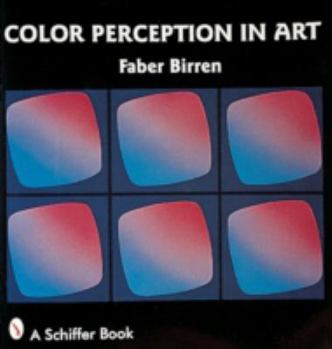Color Perception in Art
Select Format
Select Condition 
Book Overview
The most vital recent information on the relationship of visual perception to color expression in art is presented here in clear detail. Faber Birren, one of the best-known colorists of our time, prepares us for what he believes will be a new era of color expression. Pioneered by gestalt psychology many secrets of the brain are rapidly being discovered, resulting in creative new principles of color. The book is divided into three sections. First the history of nineteenth-and twentieth-century color expression is traced from Turner through Impressionism to Op Art. Next the parallel history of color theory is covered. Finally, the new concepts and interpretations of illumination, color constancy, adaptation, and the Law of Field Size, which created a revolution in the possibilities of color expression in art and their aesthetic implications, are discussed. These sections are supplemented by numerous black and white photographs of representative paintings, explanatory line drawings and the abstract, geometric color plates themselves-of the incomparable beauty and quality that are the hallmark of Faber Birren.
Format:Paperback
Language:English
ISBN:0887400647
ISBN13:9780887400643
Release Date:January 1997
Publisher:Schiffer Publishing
Length:88 Pages
Weight:0.68 lbs.
Dimensions:0.4" x 7.8" x 8.0"
Related Subjects
Art Arts, Music & Photography Education & Reference Graphic Design Techniques Use of ColorCustomer Reviews
4 ratings
Must have #1
Published by Thriftbooks.com User , 14 years ago
Birren is one of the pillars of color perception. Here he tackles the very complex subject and defines it in understandable terms.
Perceiving light
Published by Thriftbooks.com User , 15 years ago
Read in conjunction with faber's other books, this book once again confirms him as a leader in the field of colour theory for artists. This is a short book that looks at the work of Turner and then explores how to achieve colour effects in painting. It is a great pity that the few colour plates are relegated to the back of the book and that the rest of the illustrations are in black and white.
Very useful for painters
Published by Thriftbooks.com User , 16 years ago
It explains how to render many colored scenes, tricks to emulate light sensations coming for the image, cheap, clear, good images, I highly recommend it
Color Story
Published by Thriftbooks.com User , 23 years ago
A color may be a specific mix of dyes or pigments, but that may not be how it looks when seen or when remembered as afterimages. While in charge of Gobelin's dyestuffs and coloring, color theorist M.E. Chevreul saw that tapestry blacks looking black depended upon contrast with nearby colors. All 19th- and 20th-century artists have been sorting out COLOR PERCEPTION IN ART form, pattern, and design. Joseph Mallory Turner ended up being the greatest influence through it all, because of the spectrum he learned from Claude Lorrain's luminous sunsets and Moses Harris's pioneer printed full hue color circle. Author Faber Birren includes studies on how chromatic illumination, iridescence, luminosity, luster, and transparency affect color hues, tints, and tones. His unique book and William Gaunt's TURNER are learning experiences that make for smooth reading of Jim Ames' COLOR THEORY MADE EASY, Albert Handell's INTUITIVE LIGHT, Johannes Itten's THE ART OF COLOR, Trevor Lamb's COLOUR, Charles LeClair's COLOR IN CONTEMPORARY PAINTING, or Stephen Quiller's COLOR CHOICES.






